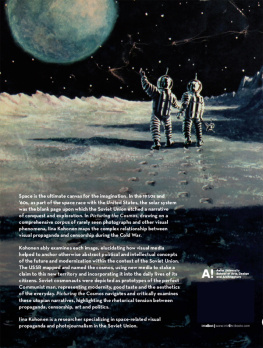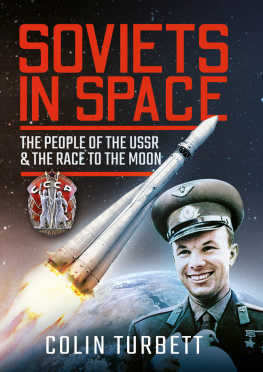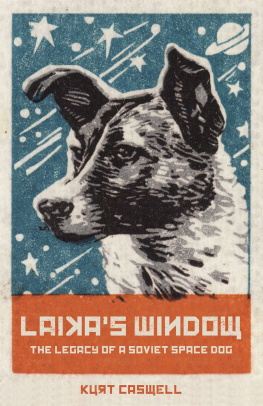Contents

IINA KOHONEN
TRANSLATION Albion Butters and Tiina Hyytiinen | GRAPHIC DESIGN Jyri Konttinen
Published with the support of Aalto ARTS Books

First published in the UK in 2017 by
Intellect, The Mill, Parnall Road, Fishponds, Bristol, BS16 3JG, UK
First published in the USA in 2017 by
Intellect, The University of Chicago Press, 1427 E. 60th Street,
Chicago, IL 60637, USA
Copyright 2017 Intellect Ltd
All rights reserved. No part of this publication may be reproduced, stored in a retrieval system, or transmitted, in any form or by any means, electronic, mechanical, photocopying, recording, or otherwise, without written permission.
Rights to produce, film, or record any of the scripted excerpts included in this book in whole or in part, in any medium, by any group, amateur or professional, are retained by the authors. For production rights, please consult the individual authors.
A catalogue record for this book is available from the British Library.
Copy-editor: MPS Technologies
Cover designer: Jyri Konttinen
Production manager: Richard Kerr and Faith Newcombe
Typesetting: Jyri Konttinen
Print ISBN: 978-1-78320-742-8
ePDF ISBN: 978-1-78320-743-5
ePUB ISBN: 978-1-78320-744-2
Printed and bound by CPI Corporate, UK
This is a peer-reviewed publication.
I n Switzerland, on to January meet the screen. the 2009, Soviet I The saw at leader a offending a huge, conference Nikita blow-up shoelace Khrushchev on photo Soviet belonged of space an upon untied to Yuri enthusiasm a triumphal shoelace Gagarin, projected return in walking Basel, to Moscow after his pioneering space flight. In her talk, Iina Kohonen used this picture one of the most ridiculous and at the same time symbolic images of the Space Age to make a point about a touch of humanity in the idealized representations of cosmonauts by the Soviet propaganda machine.
Previous studies of the visual record of the Soviet space program focused on more obvious issues, such as the retouching of cosmonauts group photos to erase perished or expelled candidates, or the elimination of cosmonauts photos with Khrushchev after the embattled Soviet leader was ousted in 1964. Such studies addressed the questions of secrecy or immediate political expediency.
Kohonens approach is different: she looks at smaller details and bigger context. She studies the photographic record of the Soviet space program not for the sake of finding vanished cosmonauts, but to detect the embedded ideological messages in other words, to compile the grammar of Soviet visual propaganda.
In this book, each space picture is truly worth a thousand words Kohonens analysis reveals not only the explicit intentions of the media, but also the underlying assumptions of the Soviet visual discourse. Photos of heavenly bodies and depictions of space technology convey the message of conquest. Shades of color and grayness in space paintings display a range of conflicting emotions, from awe to escapism. Typical imagery of Soviet space heroes in public and in private evokes a fairytale script. Representations of humans and machines are blurred in utopian technological visions.
This book shows that neither documentary photos nor artwork can ever be reduced to a single meaning. A slow study of visual images, like slow reading, uncovers what a fast glance often misses the expressions on the faces of villagers watching a just-landed cosmonaut, or the ordinary details of cosmonauts daily lives that undermine conventional stereotypes of masculinity.
The ambivalence of cosmonaut roles as heroes or ordinary people, as models of masculinity or family men, as emotional humans or extensions of technology shines through many images in the book. They encapsulate the contradictory essence of Soviet space mythology an attempt to build a propaganda campaign around a highly secretive program, to prove the superiority of socialism while stressing the peaceful and international character of the space enterprise, and to mobilize mass enthusiasm for space exploration while reaffirming domestic family values.
My interviews with Soviet space program veterans and the study of personal diaries and archival materials suggest that cosmonauts did not easily identify with their own visual iconography. While the government decreed that a bust of each flown cosmonaut should be erected in his or her home town, Alexei Leonov, the first spacewalker, objected to the installation of his monument, which thus had to remain in the sculptors studio for 28 years. When Gagarins mother asked him for a photo, he did not give her any of his iconic images, instantly recognizable around the world. Instead he found the photographer who had taken a casual picture of him before the historic flight, when Gagarin was still a young, unknown pilot. This photographer told me in an interview that Gagarin wanted to give his mother precisely that old photo, where he was not famous yet, a photo that was not endlessly reprinted in the media, a photo that had captured his humanity before he was turned into a visual symbol of the Space Age. Gagarin, the most recognizable icon of the time, did not see himself as an icon.
Whether flipping through glossy pages of popular magazines or thumbing through dusty old photos in archives, Kohonen brings to life the immediate visuality of Soviet space experience and slices off layer after layer of meanings. Whether you are a seasoned space historian, a space buff, or a casual reader, familiar space images will never look the same to you after you read this book.
Slava Gerovitch
Historian, Massachusetts Institute of Technology
Author of Soviet Space Mythologies: Public Images, Private Memories, and the Making of a Cultural Identity and Voices of the Soviet Space Program: Cosmonauts, Soldiers, and Engineers Who Took the USSR into Space.
W hile doing this research, I was very lucky to be able to work in three very different academic milieus: at the School of Art Design and Architecture at Aalto University, at the University of Tampere and at the Aleksanteri Institute at the University of Helsinki. I want to express my gratitude to everyone at these institutions for all of their support. My very special thanks go to Professor Merja Salo of Aalto University and Dr. Sari Autio-Sarasmo of the Aleksanteri Institute, who always encouraged me to dig deeper and to fly higher. Thank you! I am also deeply grateful to Professor Natalia Baschmakoff and Dr. Johanna Frigrd and Professor Hannu Salmi: your wise and critical comments on this work were encouraging and very helpful, and to Dr. Slava Gerovitch for his kind words in the foreword. I am also greatly indebted to my dear friends, peers and colleagues at the three universities. I have greatly benefited from numerous inspiring discussions with you. Still, all errors and misinterpretations are mine.
This study has received financial support from several sources. Work and travels to Russia were funded by Academy of Finland, the Alfred Kordelin Foundation, the Ella and Georg Ehnrooth Foundation, the Niilo Helander Foundation, the Patricia Seppl Foundation, the Finnish Concordia Fund, and the Finnish Association of Non-fiction Writers. The translation of this book from Finnish was kindly funded by The Finnish Centre of Excellence in Russian Studies Choices of Russian Modernisation and the graphic design by the Aalto University, School of Art Design and Architecture.











